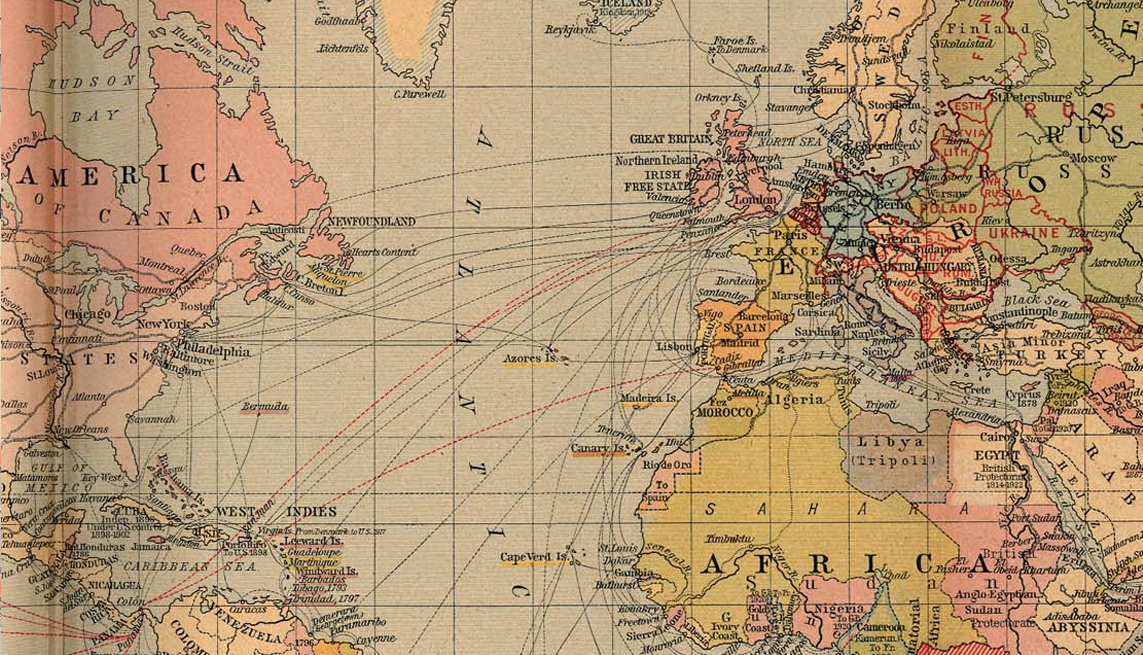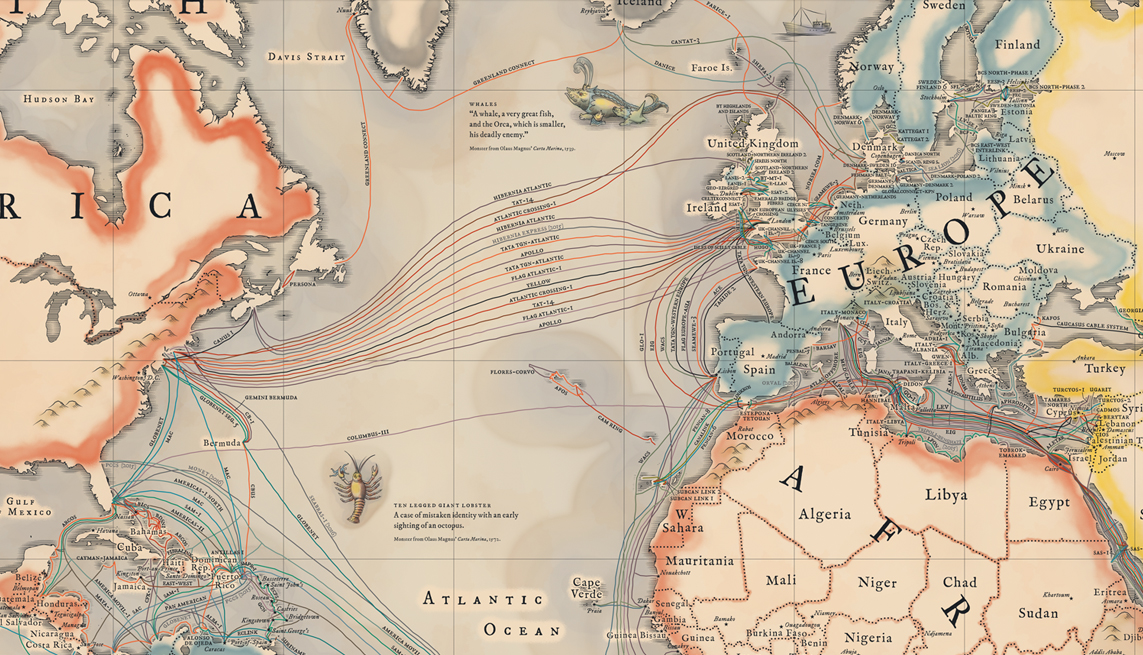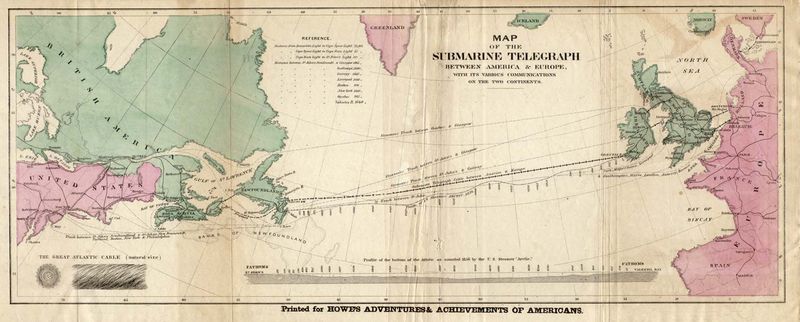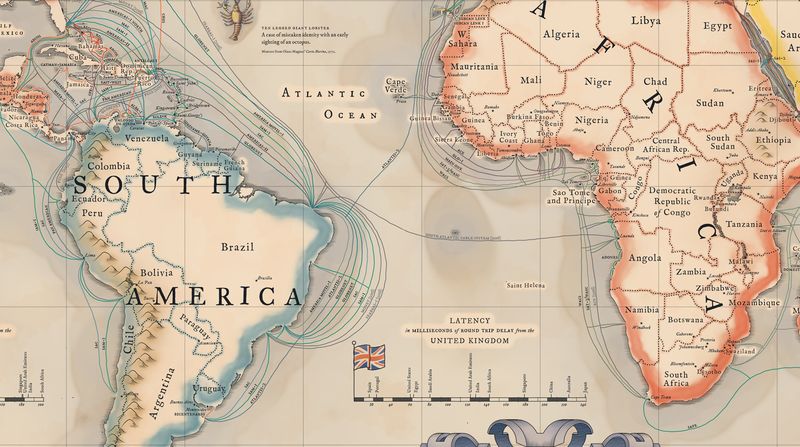A map of all the underwater cables that connect the Internet
Cables lying on the seabed bring the Internet to the world. They transmit 99 percent of international data, make overseas communication possible immediately and serve as the free authority for international trade that connects countries with a developed economy.
Semi-technical translation.
Their importance and rapid growth inspired Telegeography to make a map of the cables that connect the Internet. The map displays 299 cables that are active and working, under construction or will be funded by the end of this year.
In addition to the cables, you will find information about the "wait time" at the bottom of the card (how long it takes to get information and to transmit it) and the "illuminated capability" in the corners (which shows how much the system can send, usually measured in terabytes) . You can view the full version of the map with the possibility of enlargement here .
Cables are so widely used, as opposed to satellite transmission, because they are so reliable and fast: with high speeds and backup routes available, they rarely fail. And this means that they have become a key part of the world economy and the way the world connects.
For example, try moving the slider between the 1912 map of trade routes and the Telegeography cable card today. Economic interdependence has remained, but methods and significance have changed:


A submarine cable card shows economic ties in developing countries as well. Cables between South America and Africa are much weaker than transatlantic and cross-country routes:
Although the cable networks of developing countries are growing very fast, but to achieve full capacity it is necessary to do a great job. Also, Antarctica is not fully taken into account (the scientists there receive their Internet from the satellites).
There are many protests between submarine cables and historical trade routes: trade routes were determined by geography, as well as economic interests, and economic incentives were significantly different then they are today. It would also be an error to skip physical goods in favor of the Internet (just look at those giant container ships). But even then, now, the ways across the ocean require investments, trading partners on both sides and a willingness to take risks. Sailors took gambling in the past, and technical companies are taking it now.
Submarine cables receive large investments from companies looking to explore their own modern trade routes
These cables carry information for the entire Internet, and including corporate and including consumer interest. That's why Google has invested $ 300 million in a cross-over cabling system consortium to move data, Facebook has put money into the Asian consortium of the cable system, and the financial industry is investing just as well to shave a few milliseconds from the trading times.
Other consortia regularly lay cables to transfer the consumer Internet. The control of each group of submarine cables is an advantage in information exchange between countries.
Submarine cables - a 150-year-old idea with a new potency
The process for laying submarine cables has not changed much over 150 years - the ship crosses the ocean, slowly not writing to the buffer file a cable that drops to the bottom of the ocean. The Eastern Great SS put the first all-time successful transatlantic cable in 1866, which was used to transmit telegraphs. Later cables (beginning in 1956) carried telephone signals.

The map of the underwater telegraph in 1858, although the attempt only worked for three weeks. (Wikimedia Commons)
Modern cables are surprisingly thin, considering how long they are and how deep they drop. One usually is about 3 inches across. They are actually thicker in smaller areas where they are often buried to protect from contact with fishing boats, sea beds or other objects. At the deepest point in the Japanese Trench, the cables are submerged underwater 8,000 meters deep - which means that underwater cables can go as deep as Mount Everest is high.
The optical fiber that actually carries information is connected within a larger cable sink:
Components include:
- Polyethylene
- Mylar tape
- Stranded metal (steel) wires
- Aluminum water barrier
- Polycarbonate
- Copper or aluminum pipe
- Vaseline (this helps protect the cables from water),
- Optical fiber
These cables move video, industries, gifs, and articles that bring the Internet all over the world within milliseconds. And this is a type of advantage that any trader could appreciate-digital or analog
Translation from www.vox.com/2015/3/13/8204655/submarine-cables-internet






Comments
Commenting on, remember that the content and tone of your message can hurt the feelings of real people, show respect and tolerance to your interlocutors even if you do not share their opinion, your behavior in the conditions of freedom of expression and anonymity provided by the Internet, changes Not only virtual, but also the real world. All comments are hidden from the index, spam is controlled.